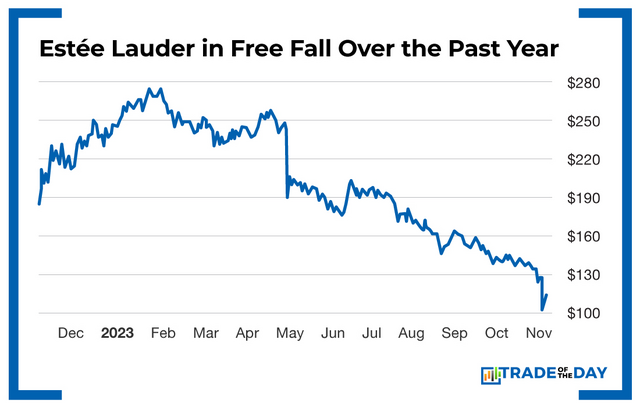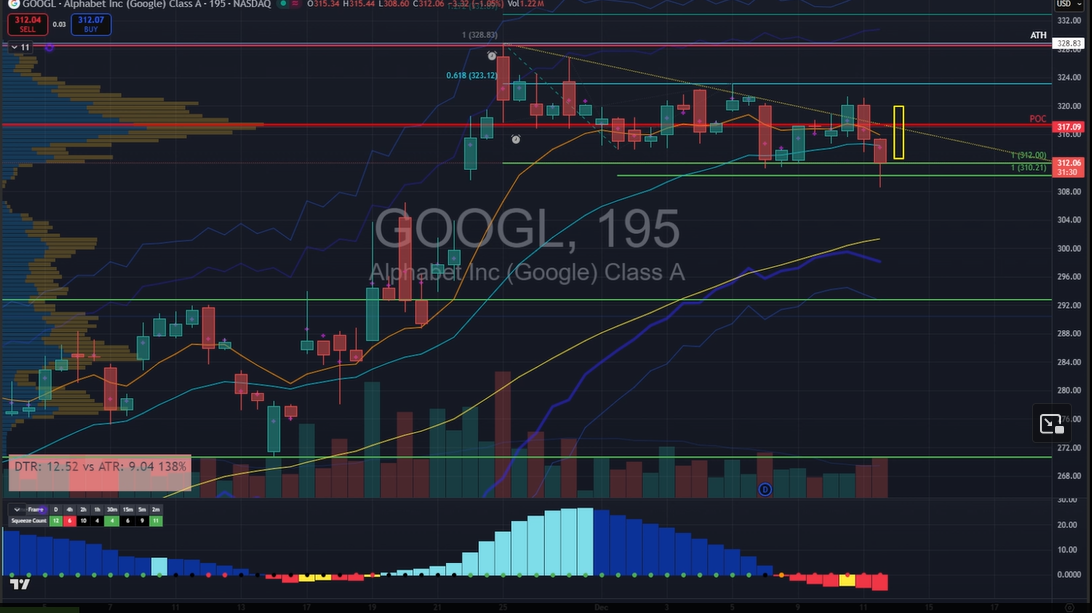Is Your Portfolio Positioned for Profits?
Earlier this week, my colleague Bryan Bottarelli closed out some massive winners, including a 205% overnight gain on Estée Lauder (EL) when the stock crashed after reporting earnings on Wednesday.
The shares fell by over 18%.
You can check out Bryan’s full breakdown of that trade here.
This big winner prompted me to remind you of a critically important aspect of trading… and that’s position sizing.
Position sizing is a crucial practice we use to minimize risk if a trade doesn’t go our way.
For example, let’s say you’d owned shares of EL…
Sure, you would’ve taken an 18% hit overnight this week.
But most of the damage likely would’ve been done long before this week. The stock has fallen from around $280 to under $120 in the past 52 weeks.
That would’ve been a portfolio killer if you didn’t have protective measures in place… and position sizing should be at the forefront of those measures.
Position sizing involves determining the amount of capital you’re going to allocate to a specific investment or trade. The goal of position sizing is to manage risk and maximize potential returns.
Here’s how to approach position sizing and risk management with your investments:
1. Determine your risk tolerance. Before you invest, assess how much risk you are comfortable with. This depends on factors like your financial goals and your time horizon.
2. Calculate your position size. Once you’ve assessed your risk tolerance, you can determine the size of your investment. A common guideline is to limit the size of any single position to a certain percentage of your total portfolio, typically ranging from 1% to 5%. I recommend no more than 4% in any single position.
3. Set stop loss orders. Implementing stop loss orders can help limit potential losses. These orders specify a price level at which you will sell the investment if it moves against you. The distance between your entry price and your stop loss can also influence your position size. I generally recommend a 25% stop loss, which means you would sell the investment if it were to close 25% below your entry price.
4. Diversify. Avoid putting all your capital into a single investment, asset class or sector. Diversifying can help you spread out your risk.
5. Adjust your position sizes based on volatility. Consider the volatility of each asset you’re investing in. If you’re investing in more volatile assets, taking smaller positions can help you manage risk more effectively.
6. Regularly review and rebalance your portfolio. Periodically review your investments and adjust your position sizes as your portfolio’s value changes and your risk tolerance evolves.
![]()
YOUR ACTION PLAN
Position sizing is a key part of risk management. It helps you protect your capital while still setting yourself up for potential gains from your investments. Tailoring your position sizes to your individual financial situation and your goals is essential.
This is something I preach almost daily in The War Room, and it’s helped members become much savvier investors who know how to hang on to their capital when things don’t go their way. It’s strategies like this that allowed Bryan and me to post an 82% win rate in October, and right now we’re guaranteeing you’ll receive 252 winning trades in your first 12 months of War Room membership. Learn more here.
FUN FACT FRIDAY
M&Ms Are Named After the Businessmen Who Created Them. Forrest Mars and Bruce Murrie created the famous candy, but apparently the two didn’t have the best relationship. Mars leveraged Murrie out of his 20% of the business before M&Ms became the biggest-selling sweet in the U.S. Ouch.
More from Trade of the Day
What’s an Investment Idea Worth?
Dec 18, 2025
The Partnership Built on Useful Disagreement
Dec 17, 2025
Why Santa Could Bring the Bulls Soon
Dec 16, 2025



























